The Winemaker’s Think Tank: Vol 38 – “So my wine is done fermenting, when do I rack it?”
What’s the Winemaker’s Think Tank?
Every Thursday we will post about a few frequently asked questions that our winemaker has answered. If you have a winemaking question you would like to have answered, please email us at support@juicegrape.com and we will try to get into next week’s post. Cheers! 🙂
So my wine is done fermenting, when do I rack it?
After fermentation, the next immediate step is to remove the new wine from its lees, which is the sediment left behind after fermentation. The lees contain dead yeast cells, grape particulates, and maybe even a few fruit flies that could lead to the development of some unpleasant aromas in the wine if not removed. Hydrogen sulfide can be produced from the lees if left in with the new wine. The first racking should be done within a week after fermentation is complete, the sooner the better. The wine should be racked into a sanitized container, with the wine filling the vessel completely, leaving a very little amount of headspace. In a carboy, the wine should go up to the neck of the carboy. After the first racking, the wine should be stored in a cool place. If the wine has been inoculated with Malo-lactic cultures, secondary fermentation will continue after the racking as the bacteria will travel over with the new wine into the new vessel. If the wine is going through MLF, do not add sulfites until this fermentation has been completed. If the wine is not going through MLF, then add a ¼ tsp of potassium metabisulfite per 5 gallons of wine to help preserve the wine. Rack every two months to continue clarifying and purifying the wine. Be sure to add sulfites each time that you rack.
We hope this information helps with your winemaking. If you have any follow up questions or winemaking questions in general, please email us at support@juicegrape.com.
2017 Wine Competition Results
Good Morning Winemakers,
The results are officially here! Click the link below to access the 2017 MWG Wine Competition Results.
Our Wine Competition Dinner will be held Saturday January 27th at Zandri’s Stillwood Inn. Click here to purchase your tickets. Best in show will be announced at the dinner!
The Winemaker’s Think Tank: Vol 37 – “How do I make Rose?”
What’s the Winemaker’s Think Tank?
Every Thursday we will post about a few frequently asked questions that our winemaker has answered. If you have a winemaking question you would like to have answered, please email us at support@juicegrape.com and we will try to get into next week’s post. Cheers! 🙂
How do I make Rose?
There are a few different approaches to making rose wines. The most traditional way is to crush red grapes, leave the juice in contact with the skins for a limited amount of time, then press off the juice rather quickly (within a few hours) to yield a deep pink colored juice. Once this juice is fermented, it will yield a rose wine. The best grapes to use for this type of production would be any red varietal with a higher acidity. Early picked red grapes or a very fruit forward varietal tend to make the best roses. Some varietals that we have worked with successfully to make beautiful roses are Barbera, Grenache, Gamay, Chambourcin, and Pinot Noir.
Another approach would be to take a white wine and to add a small portion of red wine to it, predominantly for body and color. A very small amount of red wine will provide adequate color to change a white wine into a rose color. A small amount of prep work needs to be done before the blend is created. If the red wine was put through malolactic fermentation, the MLF must be complete before the wine is added into the white wine. If the red wine has not completed MLF, it cannot be used to blend as the bacteria will begin to metabolize the malic acid within the white wine. To prevent this, first make sure that the wine has completed MLF, then add Lysozyme to prevent the further proliferation of bacteria. It is always imperative to make sure that the wines have also been adequately sulfited prior to blending as well. It is very important to do bench trials of the blends before the addition of the red wine to ensure the desired results. A small amount (5-10%) of the red wine will add a nice touch of color and body to a white wine, creating a beautifully blended rose.
We hope this information helps with your winemaking. If you have any follow up questions or winemaking questions in general, please email us at support@juicegrape.com.
The Winemaker’s Think Tank: Vol 36 – “If I want to make a blend, do I mix the grapes together when I crush, or ferment them separately and blend later?”
What’s the Winemaker’s Think Tank?
Every Thursday we will post about a few frequently asked questions that our winemaker has answered. If you have a winemaking question you would like to have answered, please email us at support@juicegrape.com and we will try to get into next week’s post. Cheers! 🙂
If I want to make a blend, do I mix the grapes together when I crush, or ferment them separately and blend later?
There are many approaches to creating a blended wine and the chosen path is directly influenced by the desired end result. Blending at crush is often referred to as a field blend. The winemaker may choose to blend at crush when 80% of the blend is one grape. Using cabernet sauvignon as an example, a winemaker may add in a crate or two of Petite Syrah or Petite Verdot to enhance the dark color of the Cabernet Sauvignon. The winemaker may choose to add a crate or two of Cabernet Franc to enhance the spiciness and perceived acidity of the wine. Adding a small amount of a different grape to the larger percentage of the dominant grape in a blend will change the wine subtly, enhancing an aspect of the original grape that may be lacking such as color or acidity.
If the winemaker would prefer to have greater and much more finite control over the flavors in the resulting blend, fermenting each varietal individually would be more advantageous. Different yeast strains may be used on different varietals to enhance specific varietal characters. After a period of separate bulk aging, the wine maker can make different sample blends to determine the final blend of the wines they desire. Perhaps the entire quantity of a varietal will not be needed for the blend or perhaps only small additions of one varietal to another will be necessary to create a balanced final product. The winemaker can create more than one blend with a few separately vinified wines as changing the varietal percentages can greatly affect the final product.
We hope this information helps with your winemaking. If you have any follow up questions or winemaking questions in general, please email us at support@juicegrape.com.
The Winemaker’s Think Tank: Vol 35 – How do I know if fermentation is complete?
What’s the Winemaker’s Think Tank?
Every Thursday we will post about a few frequently asked questions that our winemaker has answered. If you have a winemaking question you would like to have answered, please email us at support@juicegrape.com and we will try to get into next week’s post. Cheers! 🙂
How do I know if fermentation is complete?
It is often easy to see visual signs of fermentation: from activity in the airlock, bubbles, and the formation of a cap to the aromas of yeast and carbon dioxide, the wonders of fermentation are succinct observation. But how does the home winemaker know when the fermentation is complete? The simplest way of seeing if fermentation is complete is to taste the wine and observe if there is any sweetness to it. If there is still sugar that you can taste, the yeast have not yet completed their job. The most accurate and scientific way of seeing if fermentation is complete is to take a measurement of the Brix via a hydrometer. A hydrometer is a glass instrument that reads sugar content via the hydrometers buoyancy in wine juice. The juice sample should always be placed into a sanitary, cylindrical shaped vessel. As the wine ferments, yeast consumer sugar and excrete alcohol, making a thinner, less dense liquid. At the beginning of fermentation, the hydrometer will not sink very far into the wine. The sugars within the juice make it thicker and the hydrometer will float on top of the juice. As fermentation progresses the new wine becomes less dense and sugary, allowing the hydrometer to sink down into the liquid. When the fermentation is complete, the hydrometer will sink down into the liquid to the 0 mark, if not farther. When reading the hydrometer, spin it slightly in the cylinder to dislodge any bubbles that may cling to the sides of the hydrometer. Observe where the meniscus of the wine falls on the gradients of the hydrometer. This will give you your sugar level in degrees Brix of the fermenting wine. When the hydrometer sinks to zero or below, the fermentation is complete and you can rack the wine.
We hope this information helps with your winemaking. If you have any follow up questions or winemaking questions in general, please email us at support@juicegrape.com.
In stock as of 10/18/17 at 8:48AM
JUICES:
- California – ALL Varieties in Stock
- Italian – ALL Varieties in Stock
- Fresco – Call Ahead – arriving daily
GRAPES
- Cabernet
- Chalk Hill
- Central Valley
- Petite Sirah
- Lanza/Suisun Valley
- Lodi
- Aglianico
- Contra Costa
- Malbec
- Lodi
- Sangiovese
- Amador
- Central Valley
- Zinfandel
- Amador
- Cry Baby
- Old Vine Zinfandel from Lodi
- Merlot
- Paso Robles
- Central Valley
- Washington State
- Lodi
- Nero D’Avola
- Contra Costa
- Montelpulciano
- Contra Costa
- Petite Verdot
- Lodi
- Muscat
- Lanza/Suisun Valley
- Central Valley
- Lodi
- Cabernet Franc
- Paso Robles
- Barbera
- Central Valley
- Alicante
- Central Valley
- Lodi
- Ancient Vine
- Thompson Seedless
- Central Valley
- Sagrantino
- Contra Costa
The Italians have arrived!!
Our Italian Wine Grape Clones has finally arrived from Contra Costa. Located below Suisun Bay and East of the Oakland Hills, Contra Costa is the premier growing area for Italian varietal wine grapes. Many of the vines grown in this area are considered ancient. The Mediterranean climate produces wines with bold features and good color. The soil is deep and sandy, making the grapes fight for their water, only increasing the intensity of the fruit. Think big bold reds, with leathery notes, and supple tannins. Quantities are limited, make sure to call ahead so we can secure your order. Ciao!
In Stock as of 10/14/17 at 6:52AM
In Stock as of 10/14/17 at 6:52AM
Juices in Stock:
· California (All Varieties)
· Italian (All Varieties)
· Fresco Juices – Arriving soon.. CALL AHEAD for PICK UP
Grapes in Stock
- Cabernet Sauvignon
- Paso Robles (Limited Amounts)
- Central Valley (Clone 337)
- Lodi
- Sonoma
- Amador
- Cabernet Franc
- Paso Robles (Limited Amounts)
- Petite Verdot
- Lodi
- Mourvedre
- Lodi
- Merlot
- Paso Robles (Limited Amounts)
- Lodi
- Central Valley
- Washington State
- Petite Sirah
- Central Valley
- Paso Robles
- Lodi
- Cabernet Franc
- Paso (Limited Amounts)
- Old Vin Carignane
- Central Valley
- Alicante
- Central Valley
- Lodi
- Muscat
- Central Valley
- Lodi
- Suisun Valley
- Italian Clone from Lodi
- Black Muscat from Lodi
- Malbec
- Lodi
- Sangiovese
- Amador
- Zinfandel
- Amador
- Old Vine Zinfandel
- Central Valley
- Lodi
- Barbera
- Lodi
- Central Valley
- Suisun Valley
- Thompson Seedless
- Central Valley
- Grenache
- Central Valley
- Aglianico
- Contra Costa
- Nebbiolo
- Contra Costa
- Nero D’Avola
- Contra Costa
- Sagrantino
- Contra Costa
- Montelpuciano
- Contra Costa
- Abarino
- King’s River
**If you have not picked up your Lanza-Musto or Suisun Valley Grapes please call us at 877.812.1137**
In Stock as of 10/13/17 at 10:51AM
In Stock as of 10/13/17 at 10:51AM
Juices in Stock:
· California (All Varieties)
· Italian (All Varieties)
· Fresco Juices – Arriving soon.. CALL AHEAD for PICK UP
Grapes in Stock
- Cabernet Sauvignon
- Paso Robles (Limited Amounts)
- Central Valley
- Lodi
- Petite Verdot
- Lodi
- Mourvedre
- Lodi
- Merlot
- Paso Robles (Limited Amounts)
- Lodi
- Central Valley
- Washington State
- Petite Sirah
- Central Valley
- Paso Robles
- Lodi
- Cabernet Franc
- Paso (Limited Amounts)
- Old Vin Carignane
- Central Valley
- Alicante
- Central Valley
- Lodi
- Muscat
- Central Valley
- Lodi
- Suisun Valley
- Italian Clone from Lodi
- Black Muscat from Lodi
- Malbec
- Lodi
- Syrah
- Paso Robles
- Zinfandel
- Paso Robles (Limited Amounts)
- Central Valley
- Lodi
- Old Vine Zinfandel
- Central Valley
- Lodi
- Barbera
- Lodi
- Central Valley
- Suisun Valley
- Ruby Cabernet
- Central Valley
- Lodi
- Mixed Black
- Central Valley
The Winemaker’s Think Tank: Vol 34 – “Fining Agents and Why They Help”
What’s the Winemaker’s Think Tank?
Every Thursday we will post about a few frequently asked questions that our winemaker has answered. If you have a winemaking question you would like to have answered, please email us at support@juicegrape.com and we will try to get into next week’s post. Cheers! 🙂
Fining Agents and Why They Help
Fining agents can help your wine in a variety of ways, both improving on appearance and flavor. A fining agent is added to the wine to remove an undesirable compound, typically by having the opposite electron charge. There are a myriad of fining agents and each has its own specific ability to help remove an undesirable characteristic within wine. Here are a list of some of the most popular fining agents:
Bentonite: A negatively charged clay that attached to positively charged proteins and will eliminate protein haze in white wines.
PVPP: A synthetic polymer that helps get rid of reductive compounds, often caused by oxidation.
Gelatin: Made of animal bones, it has a negative charge that will attach to proteins and surplus tannins, creating rounder mouthfeel and less astringent wine.
Reduless: A form of inactivated yeast fortified with minerals to help removes sulfur defects such as hydrogen disulfide and other phenolic defects.
SuperKleer: Tandem packets of Kieselsol and Chitosan that will work to eliminate haze in wine.
Noblesse: An inactivated yeast derivative nutrient that aids in reducing bitter flavors in wines as well as the burning effect from high alcohol wines.
We hope this information helps with your winemaking. If you have any follow up questions or winemaking questions in general, please email us at support@juicegrape.com.






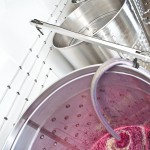
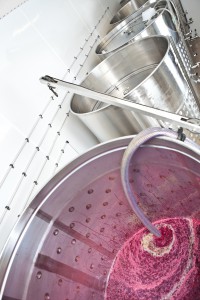



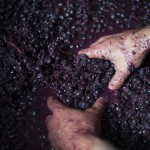
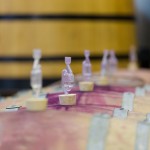
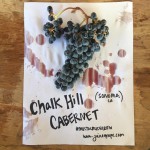

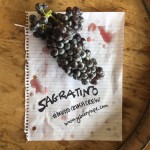
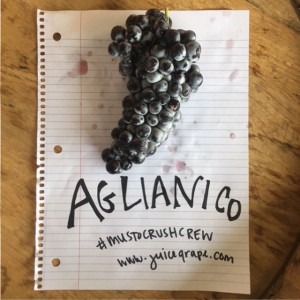
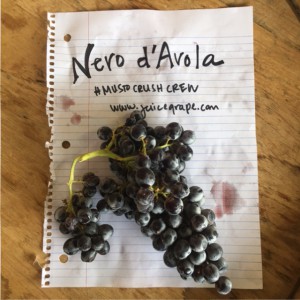
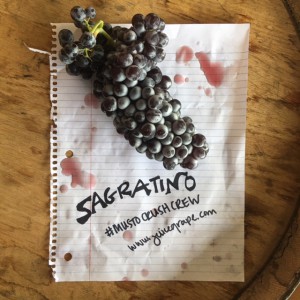
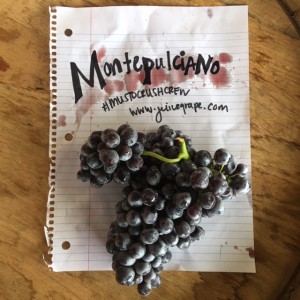
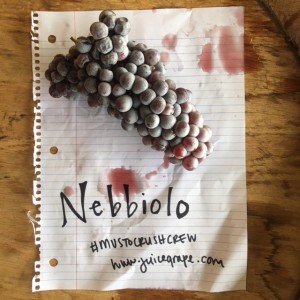

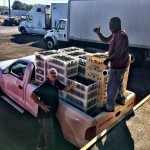

Recent Comments